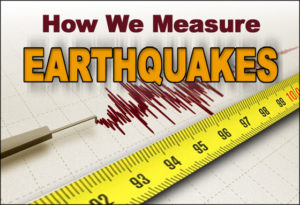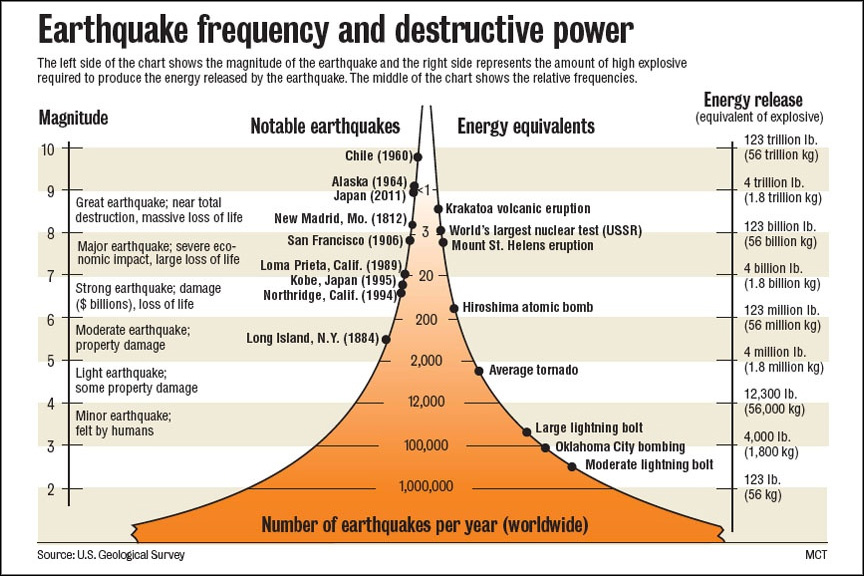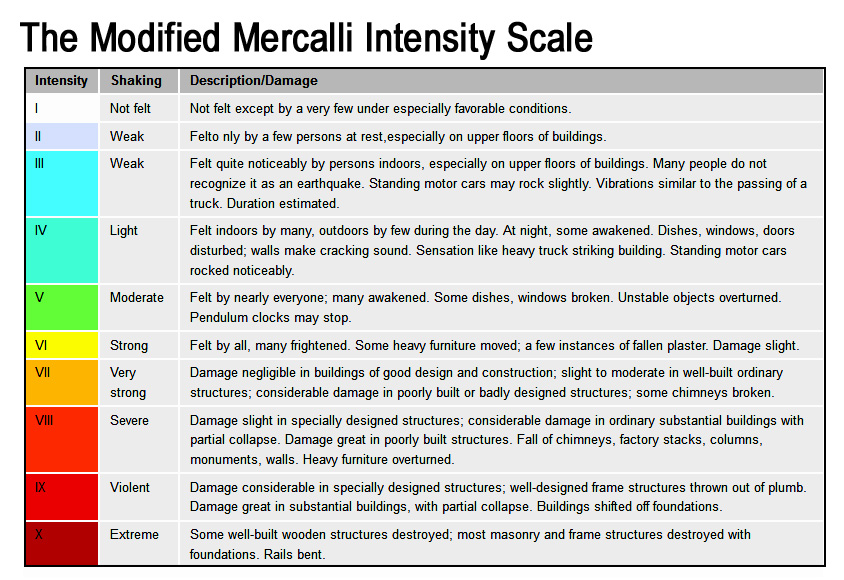Richter, Moment Magnitude, and Mercalli Earthquake Scales
When hearing about recent earthquakes, the first thing everyone wants to know is the quake’s magnitude. Having a number to define the strength of the tremblor allows us to gauge how the quake compares to other historical earthquakes.
 But what does the designated earthquake magnitude actually mean? Below are some earthquake measurement facts.
But what does the designated earthquake magnitude actually mean? Below are some earthquake measurement facts.
Early Seismographs
Seismographs are instruments used to measure the force and duration of an earthquake.
In 1883, John Milne, a British geologist and mining engineer studying earthquakes in Japan, developed a horizontal pendulum seismograph. His device measured earthquake waves and estimated their speed.
Milne theorized that earthquake waves might even be detected around the world. Then in 1899, E. Von Rehbur Paschvitz’s seismograph picked up earthquake waves in Germany from a quake shaking Tokyo, Japan.
In the 1920s, American astronomer John A. Anderson, working with American seismologist Harry O. Wood, developed an improved seismograph. In fact, Wood later spearheaded the installation of a seismograph network across Southern California.
Wood also hired Charles F. Richter to aid him in locating earthquakes in the region.
The Richter Scale
In 1935, Richter presented a scientific paper on his Local Magnitude Scale. This was an attempt to define the “size” of earthquakes. Richter applied a logarithm where each step in the scale represented ten times the force of the previous step.
However, Richter’s Magnitude Scale had several problems. It was designed to measure medium-sized earthquakes for a range of about 400 miles. It also using the Wood-Anderson seismographs. Unfortunately, these instruments proved inaccurate when measuring larger quakes over 7.0.
The Moment Magnitude Scale
In 1979, seismologists switched to the Moment Magnitude Scale (MMS) of measuring earthquake intensity. Building on Richter’s scale, the MMS is now the accepted scale for larger earthquakes.
While similar to Richter’s Scale, the MMS logarithm makes one step 32 times the force of the previous scale. Two steps indicated 1,000 times the force. Consequently, a 7.0 earthquake is 32 times the force of a 6.0 tremblor, but 1,000 times the intensity of a 5.0 quake.
The Mercalli Intensity Scale
Both the Richter Scale and the Moment Magnitude Scale measure the amount of energy released by an earthquake. On the other hand, the Mercalli Intensity Scale classfies earthquakes by the amount of damage inflicted. It quantifies a quake’s effects on the land’s surface, people, and structures involved.
Italian volcanologist Giuseppe Mercalli developed this ten-level scale in 1902. Since its introduction, various seismologists and physicists have improved upon Mercalli’s scale. These notables include Adolfo Cancani, August Heinrich Sieberg, Harry O. Wood, and Charles F. Richter.
Today this twelve-level scale is known as the Modified Mercalli Intensity Scale.
Each earthquake has only one designated Moment Magnitude Scale rating. However, the same earthquake could have many Modified Mercalli Intensity Scale ratings, based on the damage experienced in specific areas.
Building for Earthquakes with RHINO
Building code seismic provisions vary greatly across North America. Each is based on the likelihood and possible intensity of an earthquake. According to FEMA, “These seismic provisions represent the best available guidance on how structures should be designed and constructed to limit seismic risk.”
Fortunately, RHINO’s steel buildings qualify for building codes everywhere— even in earthquake prone areas. Our structures meet or exceed all current local buildings codes— guaranteed for the lifetime of the structure.
Please call RHINO at 1.940.383.9566. Learn more about the strongest, safest, smartest building system available.
Discuss your next building project with one of our experienced metal building specialists today. They will answer all your questions, provide tips on improving your project, and supply a free quote.


